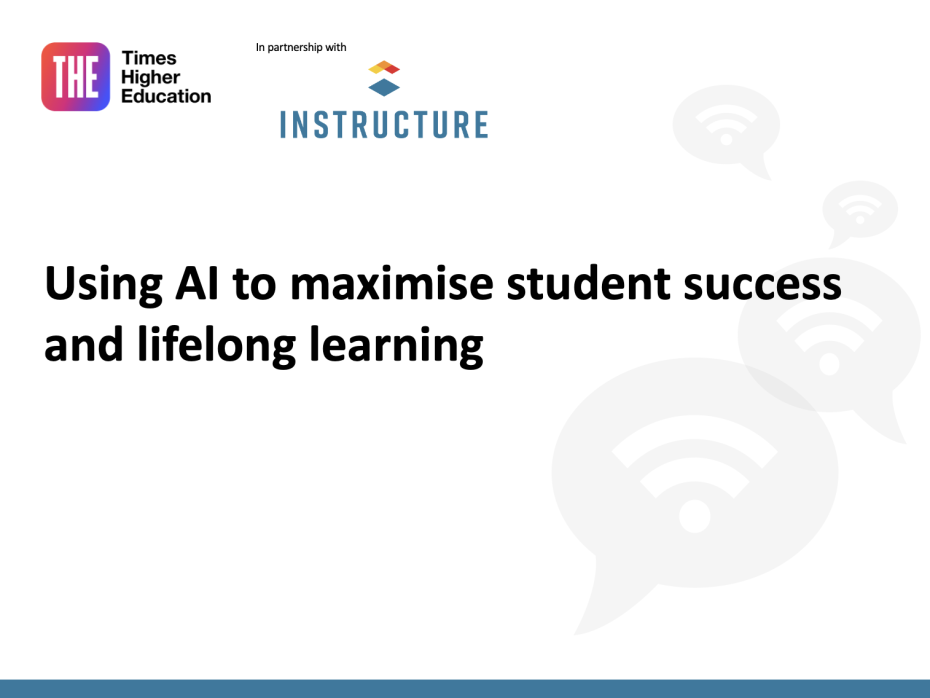The conversation around the use of data analytics in higher education has shifted since the pandemic, according to Ryan Lufkin, vice-president of global academic strategy at Instructure. “Before Covid, there was a negative perception that data would be used against students, but now universities realise that they can get a more holistic picture of how a student is doing and how programmes are performing. And they can intervene early, if necessary,” he explains. Advances in AI make it easier for institutions to access data insights and act on them, personalising the student experience and learning to ever greater degrees.
Course-level data that sits in virtual learning environments (VLEs) can now be used to drive better decision-making, not only to improve student outcomes but also to help universities stay relevant. Instructure’s Intelligent Insights solution, for example, uses AI-powered tools to allow educators to ask natural language queries in the same way they might use a chatbot. For institutions that want to dig deeper, it’s possible to access and edit the query or extract data sets from additional systems to build a holistic view. “We’ve bundled a group of common insights into the tool, or you can write your own reports using natural language. A nested approach is important because no one data strategy rules them all,” says Zach Pendleton, chief architect at Instructure.
Helping universities organise and access disparate sources of data more effectively means they can “meet students where they’re at” and help them progress through courses in a way that suits them, Pendleton adds. “Students often fall behind because they don’t have the skills to help them learn. Data insights can show whether they took an assessment and offer real-time interactions such as whether they logged on this week. It means universities can ask if these students are at risk and intervene,” he says. Student experience data can also help institutions better target communications about mental health resources and tutoring support.
Using simple AI tools means institutions can personalise their approach at scale. Before advances in technology, scalability typically meant replicating the same module over and over – now content can be tweaked as necessary and adapted for different groups and individuals depending on their needs. Universities can also advance how they use data by integrating different tools for greater impact. Wake Forest University in North Carolina, for example, combines Instructure’s Canvas VLE with Google’s NotebookLM, an AI tool that allows students and educators to interact with course materials. Course leaders can build course-specific chatbots that can help students when an instructor is not around, or even repackage course material as a podcast so students can learn in a way that suits them. “Suddenly these tools mean students have more engaging experiences, which really keeps them on course with academic outcomes,” says Lufkin.
The challenge ahead will be to bridge the AI literacy gap between students and educators, and to support institutions to overcome ethical concerns about its use. Instructure supports the movement towards adding “Nutrition Facts” labels to AI tools that show the core principles behind the product. “Many universities have great data frameworks in place and privacy policies but don’t know how to approach AI. Our job as edtech providers is to help them,” Lufkin concludes.


comment